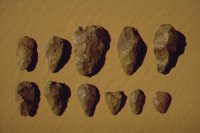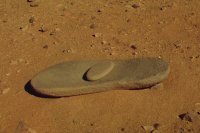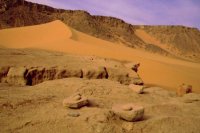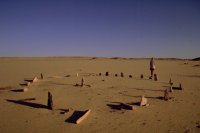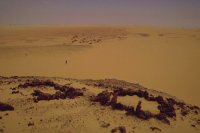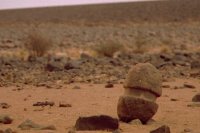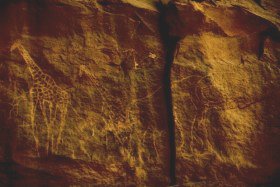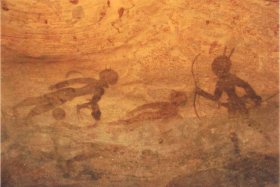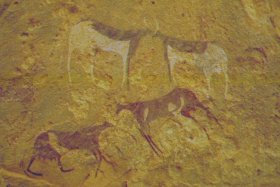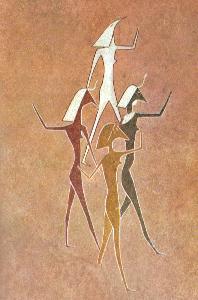The earliest evidence of ancestral humans in the Sahara comes from the Bahr el-Ghazal area of northern Chad, where a 3.5 million year old Australopithecus skull was found recently by a French team. It is evident, that in lower paleolithic times (150,000 - 100,000 years b.p.) the whole of North Africa was populated, as the characteristic pear shaped Acheulean hand axes may be found in the whole region. There were several dryer and wetter cycles during the middle and upper paleolithic, with wet peaks during Mousterian (cca. 70,000-50,000 b.p.) and Aterian (35,000-25,000 b.p) times. This was followed by a fairly long hyperarid phase, when conditions were very similar to those at present.
The great neolithic wet period lasted from about 9,000 to 2,500 b.c., when much of the Sahara was habitable for humans, . The plains and dunes in places must have been covered with grassland, with herds of ostrich, giraffe, elephants and various antelopes. In the highlands and in shallow basins on the plains several lakes formed, which supported fish, crocodile and hippopotamus. These places were ideal campsites for the early hunters, and later the water sources were essential to support the large herds of cattle of the nomadic herders, who have left their finely worked stone and bone tools and decorated pottery, as well as heaps of their 'domestic refuse' at many sites along the lakeshores and highland valleys.
Even in the wetter periods there were regional variations, and true desert conditions have returned several times for decades, sometimes centuries. The highlands have became refuges in these times for both animals and humans, capturing more precipitation than the lower lying plains. Even today, most of the great Saharan massifs enable very meagre subsistence for small groups of nomads.
